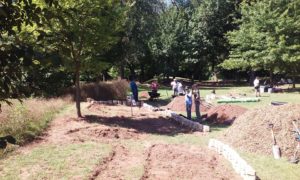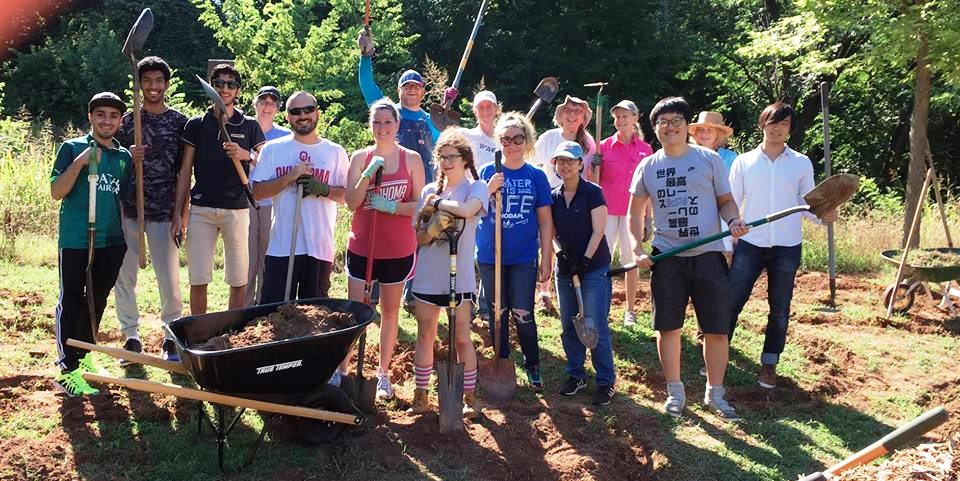In Norman, Oklahoma, new pollinator and prairie gardens full of native plants are emerging from an ecological restoration project along Bishop Creek.
The gardens are just two aspects of the Bishop Creek Restoration Project. whose plans also include public nature trails.
Second-grade teachers Kathy Nixon and Sherry Franklin are working with community experts to guide school kids through the nature-based, hands-on learning experience.
“The pollinator garden and riparian zone restoration is a wonderful pilot project for our community,” said Council member Bill Hickman.
 “Bishop Creek has a no-mow zone, but it was never specifically planted,” says the Sierra Club‘s state conservation chair, Kim Bartlett. “It has a lot of invasive species, including things like ragweed, that cause problems with people’s allergies.” The Sierra Club’s Red Earth Group has pitched in with volunteers as well as fundraising.
“Bishop Creek has a no-mow zone, but it was never specifically planted,” says the Sierra Club‘s state conservation chair, Kim Bartlett. “It has a lot of invasive species, including things like ragweed, that cause problems with people’s allergies.” The Sierra Club’s Red Earth Group has pitched in with volunteers as well as fundraising.
The restoration project is the brain child of Blue Thumb volunteer Karen Chapman, but she’s engaged a village of participants to bring a wide range of talent to the table, such as University of Oklahoma biologist Vonciel Harmon.
Blue Thumb is a public/private partnership that promotes ecologically functional landscapes – like native plants, rain gardens, and shoreline stabilization projects – to reduce runoff and improve water quality. Blue Thumb makes it easy for people to plan, purchase and plant beautiful native plants in their yards.
Blue Thumb’s mission is “planting for clean water“. Stormwater runoff is the number one threat to our water quality according to the U.S. Environmental Protection Agency. Pollutants from streets – vehicle exhaust, oil residue, grass clippings, pesticides, leaves, and pet waste – are swept away by stormwater to lakes and streams by way of storm drains causing water pollution. Using water-friendly landscaping like native plants, raingardens, and shoreline stabilization helps minimize runoff and helps keep our water clean.
Using such “green infrastructure”, the Bishop Creek Restoration Project will improve community access and aesthetics along the creek while preventing erosion and improving water quality. All while restoring biodiversity, specifically native pollinators that can make local farming activities more resilient to both climate change and the loss of European honeybees.
See full article by Joy Hampton in The Norman Transcript.
See Red Earth Group’s Bishop Creek Restoration Project Facebook page & photo credits.

